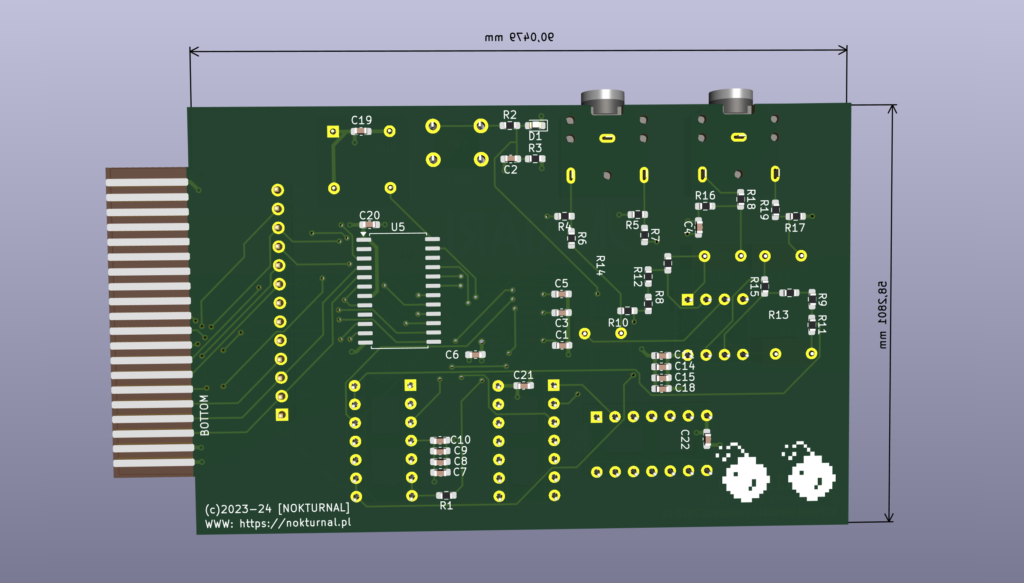Atari ST OPL3 cartridge pcb update
After publishing my last version of pcb I asked around on Exxos / Atari Forum / Atari Area for a pcb review (and it was right thing to do) and I’ve received some valuable feedback from TOri (who designs 8/16-bit Atari hardware projects and reverse engineers existing, out of production Atari hardware) and BadWolf (of DFBX1/DSTB1 fame).
I had to rework schematics a little (mainly deleting stuff, which I like ;)) and redo whole pcb design. The bad thing is obvious, I didn’t send pcb to manufacturer, had to throw out old, 2 layer pcb (which took some time to design), but good one is that new version is much better and smaller than the previous version.
I had to rework edge connector, so there will be no issues with inserting it, moved all smd parts to one side, so in case of ‘birdseed’ will be done by manufacturer it will be cheaper (it’s billed per layer), moved from 2 layer version to 4 layer version (with separate power and ground plane to hopefully reduce digital / analog signal interferences – still I didn’t separate analog and digital ground planes, and there is additional downside 4 layer boards take longer to produce and are more expensive), added footprints for WIMA film capacitors, removed througholes on SMT pads (rather bad practice), added software OPL3 reset (hardware one stays intact), which was missing in previous designs and I’ve reworked connector for signal debugging.
After discussion turned out that latches in original design were not mandatory for cpu’s under 20MHz, if tests will show that’s cartridge has issues on faster machines there will be need to make additional version with latches, unfortunately this will also influence programming interface a bit – this means additional set of drivers, which I try to avoid. Lack of latches also means less stress on m68k side and talking to OPL3 will be much less taxing than in other devices I’ve interfaced with Atari ST (and up) (i.e. OPL2LPT, OPL3LPT, OPL3 Express, OPL2 Audio board and OPL3 Duo!).
I will wait for more feedback related to this version. If there will be no big issues with design then pcb will be sent for manufacturing (maybe for real this time?). There will be also possibility to manufacture similar version, but with OPL2 (only clock generator speed will change and OPL2 is available in DIP socket). But it depends if OPL3 prototype will work as intended.
In final ST cart version there will be no debugging connectors and logic gates along with op-amp will be replaced with SOP / SSOP versions (maybe clock generator?), so this will hopefully reduce pcb size. I also plan making custom case for it, but still don’t have idea how to approach it (3d printed or molded). Possibly some work will be needed to reduce interferences between digital and analog signals.


So that’s it. I hope that next news will be about sending everything to manufacturer or that prototype pcb’s have arrived and I’m about to order missing parts. :)
O wpisie
Aktualnie czytasz “Atari ST OPL3 cartridge pcb update,” wpis w [nokturnal].
- Opublikowano:
- 3 April 2024 22:32 PM
- Kategoria:
- Atari 16/32 bit, cartridge port, Hardware, OPL2 (YM3812), OPL3 (YMF262), Wieści


Brak komentarzy
Skocz to formularza komentarzy | komentarze rss" [?] | trackback uri [?]